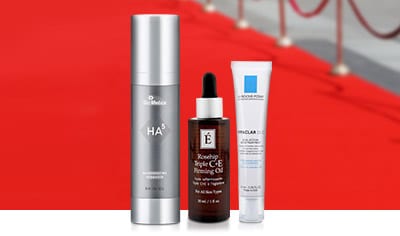Ask the Experts
Fillers vs Ultherapy Treatments
by Marie|November 17, 2015
Loss of firmness and wrinkles are something that we all have to deal with as we age. A facelift can help improve the appearance of these issues but not everyone is ready for a surgical procedure because it is expensive and it carries risks with it as well as the concern that it doesn't look natural. Fillers and Ultherapy are two treatment options that improve the appearance of signs of aging without the need for surgery. The two procedures use different methods and technologies to improve the appearance. Generally, a dermatologist or cosmetic surgeon can help you determine which is right for you.
Fillers are a wide range of treatments that are injected into the outer layers of the skin to help plump and smooth the complexion. One of the most common types of fillers uses hyaluronic acid, a substance made naturally by the body that attracts and binds moisture to the skin, but there are others as well that are longer-term or even permanent. The long-term or permanent fillers have risks that can be a challenge, but many cosmetic surgeons choose to use them.
"I prefer to use the hyaluronic acid fillers due to the proven safety profile and the fact that with ranges of 6 months to 2 years we have safe and effective treatments that are easily reversible if problems occur," Dr. Schlessinger, board-certified dermatologist says.
If your main concern is fine lines and wrinkles, especially deep expression lines, fillers are one of the most effective treatment options. They are especially effective for smoothing the appearance of lines on the forehead, furrows between the brows, laugh lines around the mouth and crow’s feet around the eyes. Fillers require no topical anesthesia or downtime so they are perfect for anyone who does not have time to recover from a cosmetic procedure.
The results of fillers can be seen immediately after the treatment. Skin will appear plumper and smoother with less noticeable fine lines and wrinkles. Depending on which type of filler is performed, the results can last between six months and two years. To maintain the results of fillers, you will only have to come in for treatments once or twice a year.
If you are looking for a completely non-invasive procedure, Ultherapy may be the best option for you. Ultherapy uses ultrasound technology to improve signs of aging. The device delivers ultrasound waves that heat collagen within the skin and break it down. This encourages the body’s natural response to stimulate the production of new collagen. The result is firmer and tighter skin that looks more youthful.
Ultherapy is a good treatment option if your main concern is loss of firmness and loose, lax skin. This can often be seen as drooping in the cheeks and jawline as well as folds around the nose and mouth. Ultherapy helps tighten loose skin by stimulating collagen below the surface of the complexion to restore youthful skin from the inside out.
Ultherapy treatments are often longer than filler treatments as the actual procedure takes between 60 and 90 minutes depending on which areas are being treated versus minutes for a filler procedure. There is no downtime following the treatment and while there may be some slight discomfort during the procedure or bruising, this is temporary and does not last long. The results are seen gradually over the course of three to six months following the treatment and patients generally require two to three treatments to see the full results. The results of Ultherapy last longer than fillers and patients only need to come in for treatments every 9 to 12 months.
Because Ultherapy does not add volume to skin, it is not as successful on its own. Unlike fillers which add volume to the skin, sagging will only be mildly improved with Ultherapy. Many times, professionals such as Dr. Schlessinger suggest a combination of treatments including Ultherapy, fillers and BOTOX to see the best results.
To find out more about both of these procedures, ask Dr. Joel Schlessinger your questions in the comment section.








